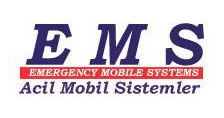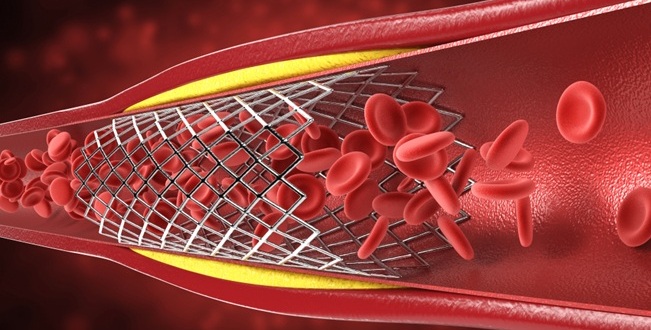Nerve Block Procedure Safe for Children
|
By HospiMedica International staff writers Posted on 25 Nov 2014 |
Caudal nerve block in children has a low complication rate, with little or no risk of long-term adverse effects, according to a new study.
Researchers at Northwestern University (Chicago, IL, USA) conducted an observational study involving 18,650 children to estimate the overall and specific incidence of complications associated with the performance of caudal block; the data were retrieved from the pediatric regional anesthesia network (PRAN) database. A complication was defined by the presence of block failure, vascular puncture, intravascular test dose, dural puncture, seizure, cardiac arrest, sacral pain, or neurologic symptoms. In addition, the presence of temporary or permanent sequela was evaluated.
The procedures were performed at 18 children's hospitals from 2007 to 2012, with average patient age being 14 months. The complication rate was 1.9%, with the most common complications being block failure, blood aspiration, and intravascular injection, but none of the reported complications led to lasting or permanent adverse effects. Serious complications such as cardiac arrest and seizure were rare, occurring in just four children. The study was published in the October 2014 issue of Anesthesia & Analgesia.
“The results draw attention to variations in the local anesthetic doses used for caudal block, potentially increasing the risk of toxic effects,” warned lead author Santhanam Suresh, MD, and colleagues. “Further studies are needed to define the optimal local anesthetic dosage, as well as the pain-relieving effectiveness of caudal block for specific types of surgery.”
“The PRAN database was a lot of work to create, but it is an important contribution to the safety of children undergoing anesthesia,” commented Steven Shafer, MD, of Stanford University (CA, USA), editor-in-chief of Anesthesia & Analgesia. “This paper shows that caudal blocks for postoperative pain control are safe in children. It will help to guide physicians, and parents, in selecting the anesthetic that provides the best outcome for their kids.”
The caudal block is the most commonly performed regional anesthesia technique in pediatric patients undergoing surgical procedures, involving a small dose of local anesthetic injected into the base of the spine to numb feeling in the lower body. It is usually added to general anesthesia, with the aim of controlling pain after surgery while reducing the required dose of general anesthetic.
Related Links:
Northwestern University
Researchers at Northwestern University (Chicago, IL, USA) conducted an observational study involving 18,650 children to estimate the overall and specific incidence of complications associated with the performance of caudal block; the data were retrieved from the pediatric regional anesthesia network (PRAN) database. A complication was defined by the presence of block failure, vascular puncture, intravascular test dose, dural puncture, seizure, cardiac arrest, sacral pain, or neurologic symptoms. In addition, the presence of temporary or permanent sequela was evaluated.
The procedures were performed at 18 children's hospitals from 2007 to 2012, with average patient age being 14 months. The complication rate was 1.9%, with the most common complications being block failure, blood aspiration, and intravascular injection, but none of the reported complications led to lasting or permanent adverse effects. Serious complications such as cardiac arrest and seizure were rare, occurring in just four children. The study was published in the October 2014 issue of Anesthesia & Analgesia.
“The results draw attention to variations in the local anesthetic doses used for caudal block, potentially increasing the risk of toxic effects,” warned lead author Santhanam Suresh, MD, and colleagues. “Further studies are needed to define the optimal local anesthetic dosage, as well as the pain-relieving effectiveness of caudal block for specific types of surgery.”
“The PRAN database was a lot of work to create, but it is an important contribution to the safety of children undergoing anesthesia,” commented Steven Shafer, MD, of Stanford University (CA, USA), editor-in-chief of Anesthesia & Analgesia. “This paper shows that caudal blocks for postoperative pain control are safe in children. It will help to guide physicians, and parents, in selecting the anesthetic that provides the best outcome for their kids.”
The caudal block is the most commonly performed regional anesthesia technique in pediatric patients undergoing surgical procedures, involving a small dose of local anesthetic injected into the base of the spine to numb feeling in the lower body. It is usually added to general anesthesia, with the aim of controlling pain after surgery while reducing the required dose of general anesthetic.
Related Links:
Northwestern University
Latest Surgical Techniques News
- Ablation Reduces Stroke Risk Associated with Atrial Fibrillation
- Optical Tracking Method Identifies Target Areas in Robot-Assisted Neurosurgery
- General Anesthesia Improves Post-Surgery Outcomes for Acute Stroke Patients
- Drug-Coated Balloons Can Replace Stents Even in Larger Coronary Arteries
- Magnetic Kidney Stone Retrieval Device Outperforms Ureteroscopic Laser Lithotripsy
- Absorbable Skull Device Could Replace Traditional Metal Implants Used After Brain Surgery
- Magic Silicone Liquid Powered Robots Perform MIS in Narrow Cavities
- 'Lab-on-a-Scalpel' Provides Real-Time Surgical Insights for POC Diagnostics in OR
- Biodegradable Brain Implant Prevents Glioblastoma Recurrence
- Tiny 3D Printer Reconstructs Tissues During Vocal Cord Surgery
- Minimally Invasive Procedure for Aortic Valve Disease Has Similar Outcomes as Surgery
- Safer Hip Implant Design Prevents Early Femoral Fractures
- New Nanomaterial Improves Laser Lithotripsy for Removing Kidney Stones
- Ultraflexible Neurovascular Microcatheter Delivers Therapies to Tiniest Blood Vessels

- Magnetic Soft Robotic Valve Provides Minimally Invasive Intervention for Acid Reflux
- Wireless Metamaterial Spinal Implants Can Feel, Heal and Communicate
Channels
Critical Care
view channel
Earlier Blood Transfusion Could Reduce Heart Failure and Arrhythmia in Heart Disease Patients
Blood loss during or after surgery can place significant stress on people with heart disease, increasing the risk of dangerous complications. Transfusions are often delayed until hemoglobin levels fall... Read more
'Smart' Shirt Detects Epileptic Seizures in Real Time
Epilepsy affects roughly one in every 100 people worldwide, causing seizures that can range from subtle episodes to severe convulsions and loss of consciousness. These events arise from excessive electrical... Read morePatient Care
view channel
Revolutionary Automatic IV-Line Flushing Device to Enhance Infusion Care
More than 80% of in-hospital patients receive intravenous (IV) therapy. Every dose of IV medicine delivered in a small volume (<250 mL) infusion bag should be followed by subsequent flushing to ensure... Read more
VR Training Tool Combats Contamination of Portable Medical Equipment
Healthcare-associated infections (HAIs) impact one in every 31 patients, cause nearly 100,000 deaths each year, and cost USD 28.4 billion in direct medical expenses. Notably, up to 75% of these infections... Read more
Portable Biosensor Platform to Reduce Hospital-Acquired Infections
Approximately 4 million patients in the European Union acquire healthcare-associated infections (HAIs) or nosocomial infections each year, with around 37,000 deaths directly resulting from these infections,... Read moreFirst-Of-Its-Kind Portable Germicidal Light Technology Disinfects High-Touch Clinical Surfaces in Seconds
Reducing healthcare-acquired infections (HAIs) remains a pressing issue within global healthcare systems. In the United States alone, 1.7 million patients contract HAIs annually, leading to approximately... Read moreHealth IT
view channel
Printable Molecule-Selective Nanoparticles Enable Mass Production of Wearable Biosensors
The future of medicine is likely to focus on the personalization of healthcare—understanding exactly what an individual requires and delivering the appropriate combination of nutrients, metabolites, and... Read moreBusiness
view channel
Philips and Masimo Partner to Advance Patient Monitoring Measurement Technologies
Royal Philips (Amsterdam, Netherlands) and Masimo (Irvine, California, USA) have renewed their multi-year strategic collaboration, combining Philips’ expertise in patient monitoring with Masimo’s noninvasive... Read more
B. Braun Acquires Digital Microsurgery Company True Digital Surgery
The high-end microsurgery market in neurosurgery, spine, and ENT is undergoing a significant transformation. Traditional analog microscopes are giving way to digital exoscopes, which provide improved visualization,... Read more
CMEF 2025 to Promote Holistic and High-Quality Development of Medical and Health Industry
The 92nd China International Medical Equipment Fair (CMEF 2025) Autumn Exhibition is scheduled to be held from September 26 to 29 at the China Import and Export Fair Complex (Canton Fair Complex) in Guangzhou.... Read more







.jpg)






